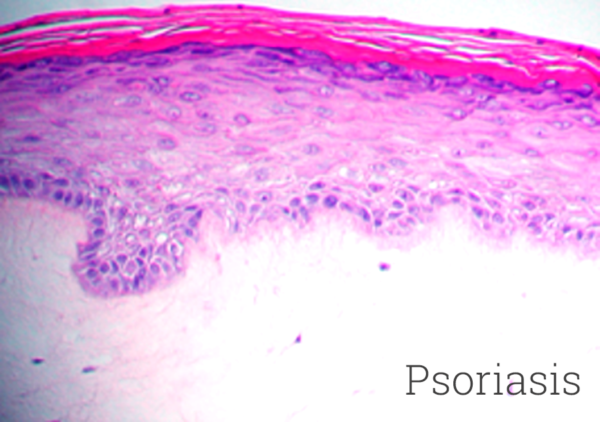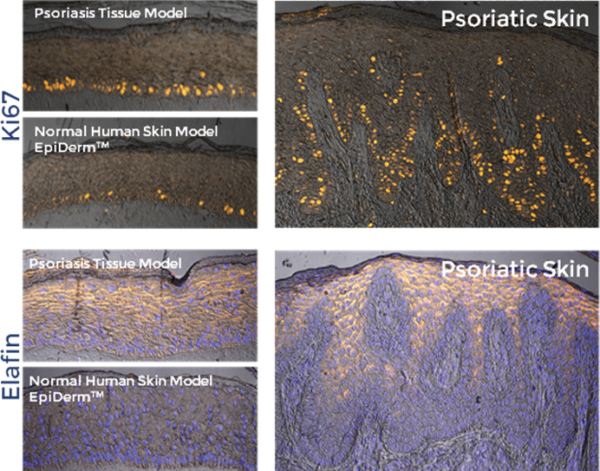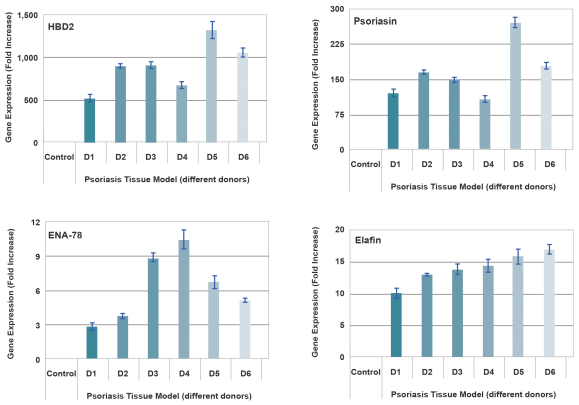Overview
An abnormal accumulation of polymorphonuclear leukocytes, dermal angiogenesis, epidermal hyperplasia (Acanthosis) with elongated ridges and abnormal differentiation of epidermal keratinocytes, infiltration of activated T cells and dendritic cells, and elevated cytokine levels are all features of the chronic inflammatory skin disease psoriasis.
To study psoriasis and test potential treatments for safety and efficacy, MatTek has created an in vitro model of the condition.
Technology

Image Credit: MatTek
Psoriatic fibroblasts and healthy human epidermal keratinocytes taken from psoriatic lesions were used to create MatTek’s diseased 3D model of psoriasis. To create a multilayered, highly differentiated tissue, the cells are cultured on specially designed cell culture inserts using serum-free medium
The Psoriasis tissues continue to exhibit a psoriatic phenotype, as shown by elevated basal cell proliferation, psoriasis-specific marker expression, and psoriasis-specific cytokine release. The tissue model closely resembles lesioned psoriatic human tissues morphologically
Researchers can use the model to study other fundamental psoriasis biology phenomena and evaluate the safety and efficacy of lead therapeutic compounds in a highly controlled in vitro environment

Image Credit: MatTek
The psoriasis tissue model displays a psoriatic phenotype, which is demonstrated by an increased expression of psoriasis-associated markers such as human-defensin-2 (HBD2), psoriasin, SKALP/elafin, keratinocyte hyperproliferative cells, and proinflammatory cytokines/chemokines like IL-6, IL-8, GM-CSF, and IP-10
MatTek’s Psoriasis model can be created from six different donors, facilitating the study of therapeutics while taking into account biological variability between donors

Image Credit: MatTek
The in vitro psoriasis model responds to commercially available anti-psoriatic therapeutics and can be used to simulate the interactions between the immune system and the skin by exogenously adding soluble immune cell factors

Image Credit: MatTek

Image Credit: MatTek
Human relevance

Image Credit: MatTek
The psoriasis model developed by MatTek replicates the morphology and progression of psoriasis in vivo, making it a useful tool for research on the condition and testing potential treatments for it.
Applications
Anti-psoriasis drug screening
Researchers can utilize the model to test the pre-clinical efficacy and safety of lead therapeutic compounds in vitro.
Psoriasis disease research
In terms of morphology and cytokine expression, the tissue model substantially resembles lesional psoriatic human tissues. This model gives researchers an in vitro method for studying psoriatic biological processes.